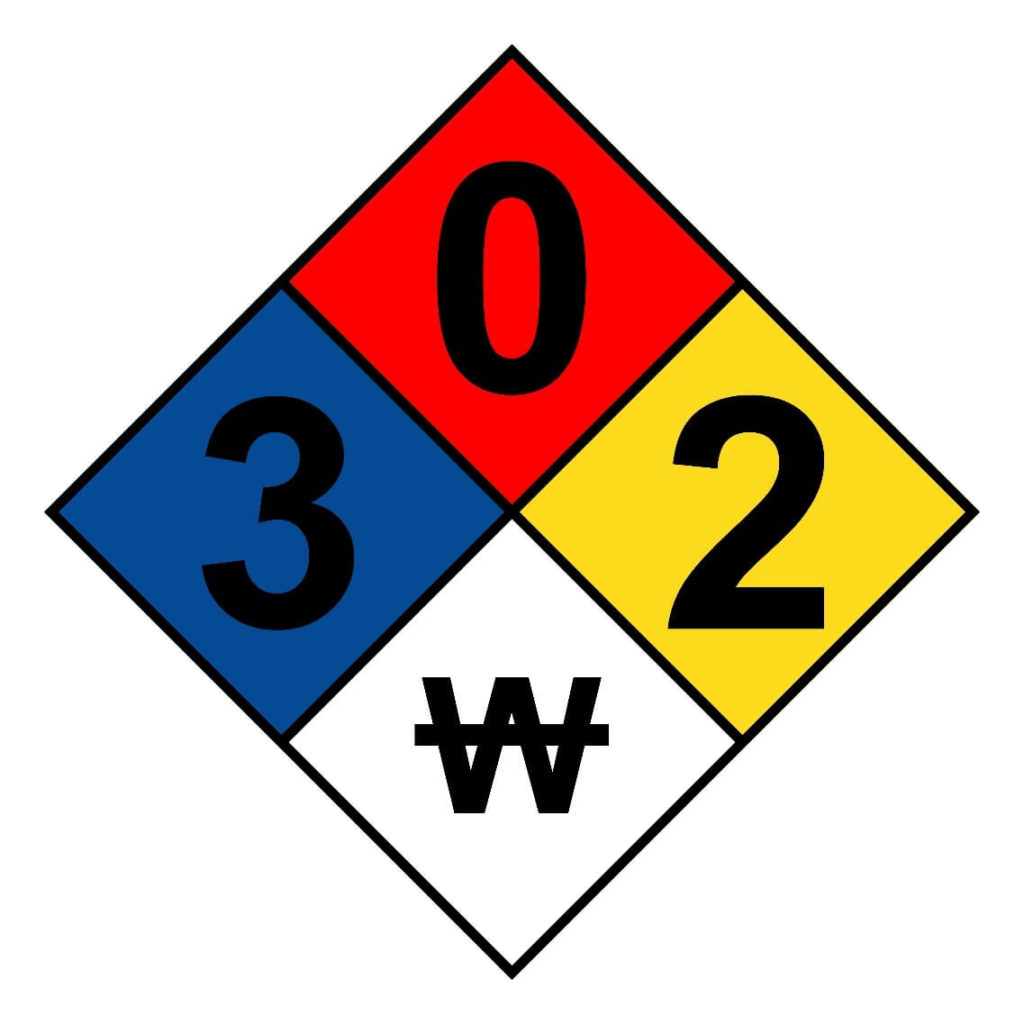Understanding NFPA 704 Hazard Classification System in Hawaii.
In Hawaii, National Fire Protection Association standard applies to facilitates that manufacture, store or use Hazardous Materials. The NFPA system identifies Health, Flammability, Reactivity and Special Hazards of a material.

So, let’s talk a bit about what is on that NFPA diamond that may be prominently displayed at your work settings around the Islands. Even if you are saying “Bro, in Hawaii, in my work setting I am not even a mile close to being around hazardous materials;” We get it, but surely you must have seen a sign that looks like what is above (but with different numbers and things on it), on a big truck going down H1 on a given day.
NFPA 704: Standard System for the Identification of the Hazards of Materials for Emergency Response
Idea is that these signs are on that truck going down H1, because critical Hazardous Material information may be needed immediately, so emergency responders will be able to tell from the distance what that Hazardous Material is in case of an accidental spill. That way they can deal with incidents quickly and safely using the right Personal Protective Equipment and protocols.
Worse case movie disaster scenario: Picture this. Hot humid day. Cameras are rolling. Dramatic music. You arrive with your car to a scene of a major accident seconds after it happened. Stuff that is all over the ground looks like spilled milk. Everybody around you all the sudden starts crying. But, you know folks are not supposed to cry over spilled milk. So, what’s up with these folks anyway? Is it really spilled milk or is it something else? You see the NFPA diamond, you look at the colors, you look at the numbers, you know about safety hazards because you are totally into our blogs. You conclude it is time to get folk out of there… You are a hero! Everybody is crying with joy because you saved the day! (Now imagine the hero music and the end credits).
Moral of the story: Ok, the story above is a bit Hollywood. It is intended that way. In real life, professionals will be there probably within a very short time to handle the situation. One of the reasons why Superman can’t get a job on this planet, flying off into the space pushing a Distressed Hazmat Truck, is because there are regulations galore on transportation and handling of Hazardous Materials. Regardless even if you are not involved directly with Hazardous Materials, understanding NFPA diamond is on the list of “good stuff to know” for everyone in Hawaii. This information is not only for the folks we train in our Hazardous Waste Operations and Emergency Response classes at the Pacific Safety Academy in Downtown Honolulu.
So here are the basics of NFPA 704 diamond:
NFPA Diamond Colors:
- Blue is for Health Hazard.
- Red is for Flammability Hazard.
- Yellow is for Reactivity Hazard.
- White is for Special Hazard associated with the material.
NFPA Diamond Numbers and letters:
Numbers on each blue, red or yellow section can be 0 to 4. Based on the degree of severity of the Hazard, 0 being the lowest 4 being the highest. The white section may have W crossed with a line, signifying reactivity with water. The letters OX signifies that the material has oxidizing properties. The letters SA signifies asphyxiant gas.
Conclusion:
NFPA diamond identifies the Health, Flammability, Reactivity and Special Hazards of a material. The colors, numbers, and letters on the diamond signify severity of the degree of hazard and types of action expected from the material. Of course, there is a lot more detail to the NFPA diamond, especially if you got to be trained on it for your job.
To learn more:
If you want to learn more about the subject of NFPA 704 in a fun way, and at the same time meet compliance requirements, you can take a related class at the Pacific Safety Academy in Honolulu. NFPA diamond is one of the subjects covered during HAZWOPER training. Several other PSA curricula also go into it as we cover the OSHA Hazard Communication Standard. Pacific Safety Academy classes are enjoyable, entertaining and won’t take the life out of your compliance training requirements. PSA classes are hosted in coordination with Fast CPR, a Hawaii based, nationally recognized 501(c)3 training organization with state-of-the-art training equipment and training resources. You can also schedule a group class at your facility.
Mahalo for reading and Mahalo for sending us all your friends. Stay safe!

